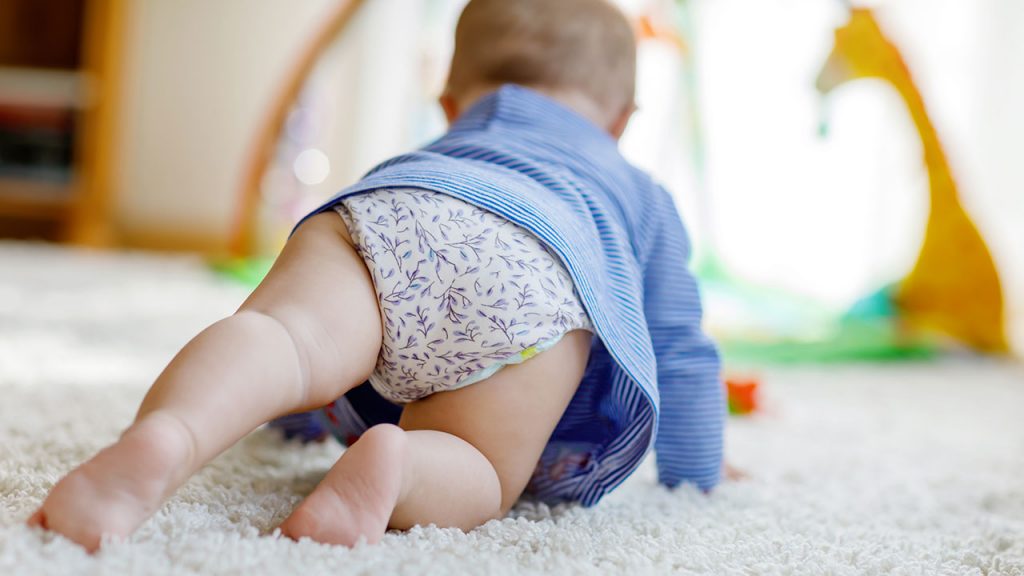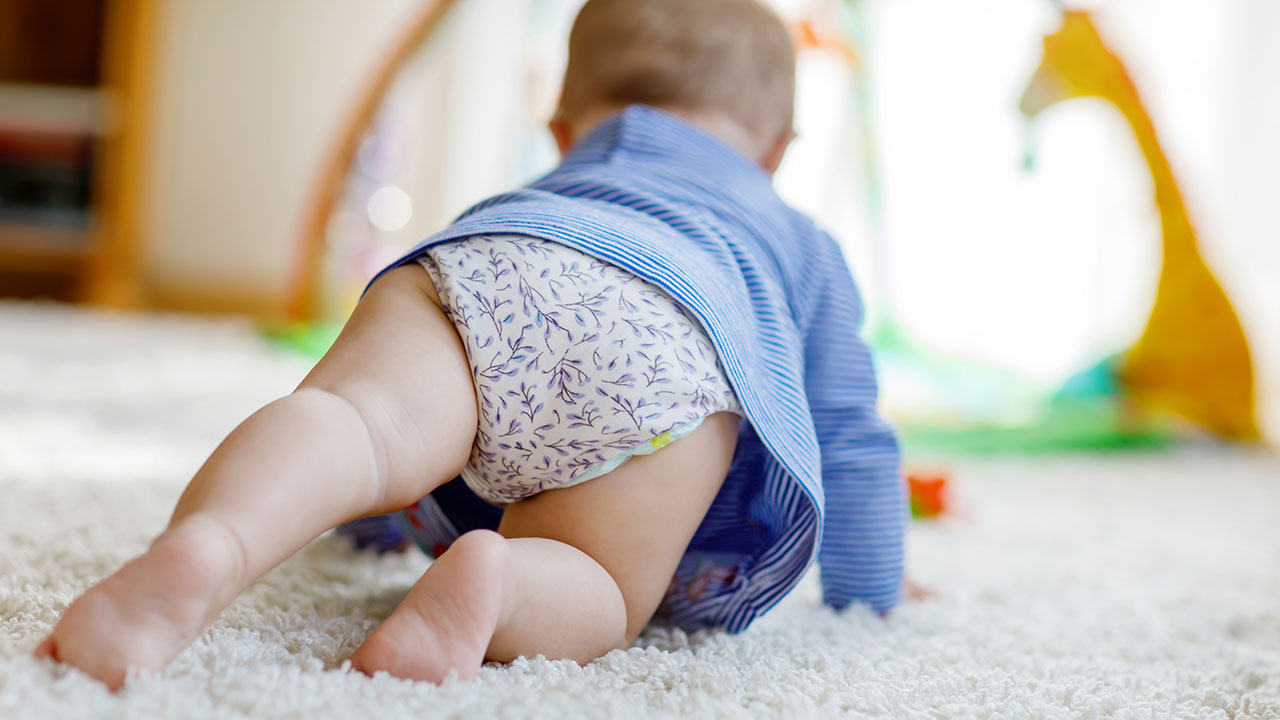As it’s a baby’s primary job to keep on growing, many parents find themselves uncertain when the baby outgrows the diapers. That’s why this article focuses on how should diapers fit and when’s the right time to change to a bigger size.
Babies usually spend their first three years wearing diapers before they’re ready to be potty trained. This means that thousands of diapers will be changed during this period. Not to mention the consequences of choosing the wrong diaper size, including the dreaded blow-outs (a parent’s worst nightmare).
That being said, it’s our duty as parents to provide the best comfort for our little ones, especially when it comes to their everyday outfits. Continue reading this article as we elaborate on the subject to learn how to keep your baby comfortable during this growing period!

How Should Diapers Fit
The best way to know if your baby’s diaper fits properly is if it falls just below the belly button (not too far below it or covering it). Make sure that it covers the baby’s bottom by hanging down instead of fitting tight for it to provide extra room. Furthermore, the diaper tabs should fasten easily in the front, near the tummy.
After you’ve put the diaper on the baby, check if it fits comfortably without creating a muffin top. Loosen the diaper tabs or choose a larger size if your baby’s tummy seems to fall out on top. When it comes to the back side, the diaper is supposed to create a straight line across the back as it’s higher than the front.
Another thing to keep eye on is for the ruffles to be out, not tucked under the legs. This is usually the main cause of leakage, as it’s easy for an inexperienced parent to miss this step.
Your baby should also always have the freedom of movement, so the diaper mustn’t restrict any activities. If you notice that your baby is having trouble moving around, try loosening up the tabs or choose an appropriate diaper size.
How to know if your baby’s diaper is too tight
There are a few signs that’ll let you know that it’s time to switch to a bigger diaper size. Pay attention to the list of things mentioned below to make sure your baby is comfortable and the diaper is leakproof.
Diaper weight limits
Make sure to check the box packaging to ensure that you’re using the right ones for your baby’s weight. But keep in mind that the limits are based on average-sized babies, so you might have to try different sizes before finding what works best for your little ones.
Red marks
Noticing these marks on your baby’s thighs is a certain way to know that the diaper is causing discomfort. This happens when the diaper doesn’t fit properly because it’s too small. Furthermore, the elastic around the legs should also have free space to stretch.
Frequent leaks
Even though parents often blame the brand, frequent leaks are mostly caused by the diaper being too small to contain the baby’s messes.
Waist size
The diaper is supposed to close easily and without difficulty connecting the tabs at the baby’s waist. If you find yourself in a situation where you have to tug and pull on the tabs, you should try a bigger size.
Read more: How to Know When to Size up Diapers
Extra Tips for Maximum Comfort
Even if you’ve taken into consideration all the steps to keep your baby comfortable in their diaper, never forget to tend to the skin. Wiping the bottom clean and applying diaper cream should be a habit for every parent. This is especially important if your baby is prone to diaper rashes. A skin rash caused when the baby’s skin comes in contact with urine and stool.
Cleaning the bottom
The first thing you should know is that changing disposable diapers frequently is a must. After disposing of the diaper, you can clean your baby’s bottom with warm water by using a sink, tub, or water bottle.
Moist washcloths, baby wipes, and cotton balls can assist you in the cleaning process as well. However, make sure that the wipes don’t contain any fragrance or alcohol, as they can irritate the skin.
Make sure you’re gentle when cleaning your baby’s bottom and that you’re using the right cleaning products. You shouldn’t scrub hard, but instead, pat the skin gently with a clean towel or let it air dry.
Applying diaper cream
The next thing you should do is apply the appropriate diaper cream. Make sure to put on cream, paste, or ointment during each diaper change if your baby is prone to rashes. In case there’s still some clean product left from the previous diaper change, just apply another layer on top of it without removing it.
Diaper creams vary in ingredients and ways of application. The most common ones are sprayable and EWG-verified, as well as creams for eczema-prone skin. The sprayable cream is perfect for irritated skin because you can apply it without touching or rubbing it in.
You can also try products that contain petroleum jelly and zinc oxide, as they’re proven to be useful against rashes. By using these products, you prevent any irritants from coming in contact with your baby’s skin.
Also read: What Do Diaper Sizes Mean?
Conclusion
So, how should diapers fit? There are a few things to take into consideration when it comes to achieving the perfect fit – diaper tabs fastened easily below the belly button, extra space in the bottom, no muffin top, and no restrictions for movement. You should also make sure to commit to appropriate diaper-changing habits to provide your little ones with the utmost comfort.
Don’t forget that just like adults, babies vary in shape and size, so not every diaper may fit your baby perfectly. Try out different products before deciding which ones are the best fit for you and your baby. Hope this article helps guide you through everything you should keep an eye on to find the perfect diaper fit!








